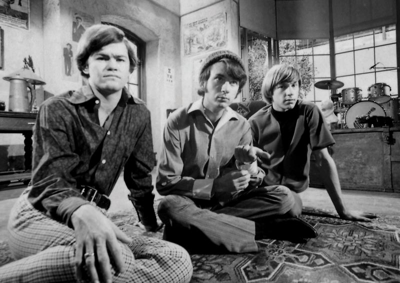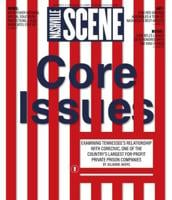When one attempts to write about The Monkees, the fifth member of the group always demands attention. Namely, the 800-pound gorilla that is The Monkees' tale — the Pre-Fab Four, a "fake" rock band assembled by Hollywood producers solely to star in a TV show, and the idea that none of their music is worthy of serious attention.
It's a persistent and pernicious myth, and — as with most urban legends — one that's easily dispelled by the facts. In the early months of 1967, the myth-storm was raging at full force, and The Monkees definitely had something to prove. In February of that year, the quartet gained their musical freedom with the ouster of producer Don Kirshner. Kirshner had overseen the music of the group's first two albums and the first season of their hit TV show. He viewed The Monkees as vocalists and nothing more. For the most part, he barred them from playing their own instruments on recording sessions, participating in song selection or performing any of the other functions that they believed they were hired to do as a band.
Michael Nesmith led the revolt. As an established singer and songwriter in the Southern California scene and an aspiring record producer, he was particularly chafed by Kirshner's condescension. The battle raged for months, and eventually led to a contentious meeting that ended with Nesmith punching his fist through a wall. When the dust settled, Kirshner was gone, and The Monkees were calling the shots.
There was a problem. All four of The Monkees were talented guys — all with varying degrees of musical experience and each with their own musical interests — but the onscreen acting chemistry of the quartet didn't automatically translate to the recording studio. As Mike Nesmith told Monkees biographer Andrew Sandoval, "[It was like] a really good tennis player, and a really good football player, and a really good basketball player, and a really good golfer got together and played baseball. ... We could give it a try. Maybe make a little garage-band music."
And that's exactly what they did. During the early months of 1967, The Monkees secreted themselves away in RCA's Hollywood studio to produce Headquarters. Released in May 1967, the album still stands as one of the most engaging, creative and endearing rock albums of the 1960s. After some silly introductory studio chatter (the guys were also comedians, remember), the album kicks off with the countrified garage-rock psychedelia of Nesmith's "You Told Me" and then feeds right into the folk pop of "I'll Spend My Life With You." The mix of musical styles continues. A flat-out frantic garage rocker, "No Time," nuzzles up next to the pure pop confection of "Forget That Girl" and a magisterial monument of country rock, "You Just May Be the One."
Side 2 opens and closes with two of The Monkees' finest moments. Peter Tork's wonderful "For Pete's Sake" captures the heady optimism of the counterculture in a way that remains infectious four-and-a-half cynical decades later. The album closes with "Randy Scouse Git," a smashing example of Micky Dolenz's vocal prowess, and a demonstration of how weird The Monkees could be while never leaving their audience behind. Throughout the album, the varied styles of The Monkees' musical interests combine to produce one of the greatest sum-to-parts return ratios ever.
Headquarters hit the No. 1 spot on the Billboard album chart the week of June 24, 1967, and dropped a notch the next week due to the release of The Beatles' Sgt. Pepper's. For the next 11 weeks, the albums occupied the top two spots, a yin and yang at the soul of pop music during the Summer of Love. Sgt. Pepper's became the LP that launched a thousand pretentious concept albums, but Headquarters demonstrated that rock music could be just as adventurous, innovative and relevant without aspiring to high art.
Oddly enough, one of the greatest obstacles The Monkees faced in making a coherent work is also one of the primary reasons for Headquarters' artistic success. If Dolenz, Jones, Nesmith and Tork hadn't been brought together by Hollywood producers, they would never have formed a band on their own. But given their position and the unifying desire to defy their critics, everything came together in 30 minutes of sublime dissonant cohesion. It's hard to cite another rock album that fires in as many directions as Headquarters but still sounds like the work of one band — at least until the Clash released London Calling in 1979.
Of course, such a volatile mixture couldn't remain stable for long. The group maintained the musical unity for their next LP, Pisces, Aquarius, Capricorn & Jones Ltd. But with the release of The Birds, the Bees & The Monkees in April 1968, the group dissolved into individual musical fiefdoms. Each member produced his respective tracks with little input from the others — a fate that also overtook The Beatles that same year.
Forty-six years after its release, Headquarters is still proof that there was nothing pre-fab about the four. When the three surviving members play the Ryman Wednesday night, they can not only stand erect as a "real" rock 'n' roll band, but also as one of the best — an accomplishment that any primate can be proud of.
Email music@nashvillescene.com.





